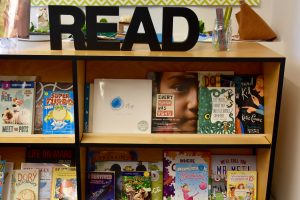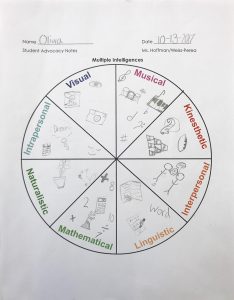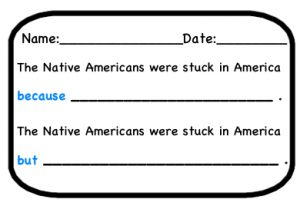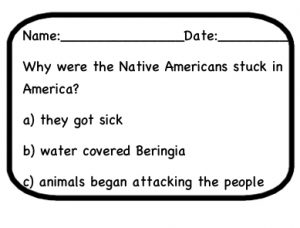One of Gaynor’s core tenets is an individualized curriculum for each student. But did you know this means material can be differentiated down to as single question? Read on to find out how different teachers approach this process and why it pays off when it comes to unlocking each child’s potential.

The library in Ms. Moskowitz’ room was redesigned to be more accessible and less intimidating.
Jane Moskowitz, Head Teacher, Silver Cluster
“I teach students in every medium possible so every learning style has a place in the curriculum,” said Jane Moskowitz. When teaching, Moskowitz incorporates videos, reading, and even acting performances into her lessons.
“We always say we live and breathe content in our class.” But when it comes to differentiation, it goes beyond the desks. Over the past summer, Ms. Moskowitz redid her library in order to create a more personalized experience for her students. By purchasing new books, she ensured her students could confidently choose any book and be able to read it, rather than trying to find a book suited to their skill set. Next, she laid all the books flat rather than putting them in bins so they looked more inviting and less intimidating. During independent reading times, Moskowitz and assistant teacher Sara Curwin spend a few minutes with each student to help them find a book that is a good fit. Once a student has chosen a book, the student can grab a reading tracker (if it helps them) and sit in a spot that works best for them. Alternatively, the teachers offer to read to students for whom decoding is still burdensome, or suggest they use Learning Ally, which allows them to listen to a book and follow along with the printed words instead.
Rochelle Hoffman, Head Teacher, Gold Cluster
 Rochelle Hoffman, a Head Teacher in the Middle School, typically prefers to differentiate in the moment, rather than in advance. Depending on the student, she will change up questions from open-ended to matching to multiple choice or even fill-in-the-blank depending on the student’s skill level. “Every kid learns differently and every kid shows their knowledge differently.” Hoffman prefers to use differentiation as a diagnostic tool. For example, in literature she can group in more items, scaffold items, or take problems away. (See scaffolding on page 37 in the Gaynor Glossary.) In the example below, Hoffman differentiated in advance for a lesson on the different types of intelligences. One student is given a pre-filled in pie chart and expected to answer open-ended questions, while another is asked to draw pictures to represent the various types of intelligences.
Rochelle Hoffman, a Head Teacher in the Middle School, typically prefers to differentiate in the moment, rather than in advance. Depending on the student, she will change up questions from open-ended to matching to multiple choice or even fill-in-the-blank depending on the student’s skill level. “Every kid learns differently and every kid shows their knowledge differently.” Hoffman prefers to use differentiation as a diagnostic tool. For example, in literature she can group in more items, scaffold items, or take problems away. (See scaffolding on page 37 in the Gaynor Glossary.) In the example below, Hoffman differentiated in advance for a lesson on the different types of intelligences. One student is given a pre-filled in pie chart and expected to answer open-ended questions, while another is asked to draw pictures to represent the various types of intelligences.
Kristen Kurre, Head Teacher, Silver Cluster
Kristen Kurre differentiates in the moment, all day every day. Depending on how well students are grasping the material, she will give different questions to different students. In math class, at the end of learning a new concept, students play a game of Jeopardy. During the game, Ms. Kurre will alter questions to fit the student. In social studies, students are given enter and exit cards which have “warm up” questions.* By using her knowledge of the student’s learning style, Ms. Kurre will choose which format is most appropriate. For example, a visual learner might be asked to conceptualize their answer with a drawing. For others, multiple choice works better.
“The biggest benefit to students is that they all feel successful and more confident about learning at the end of the day,” said Ms. Kurre. “My main goal is to help increase their confidence and to make them feel success without feeling stressed or embarrassed in front of their peers. [Differentiation] means that their needs are being met and they are being reached at their academic potential.”

*This warm-up activity is referring to the historic migration of humans and specifically, the flooding of the land bridge, Beringia.

This article was originally published in the Winter 2018 issue of Gaynor Gazette which you can view here.
